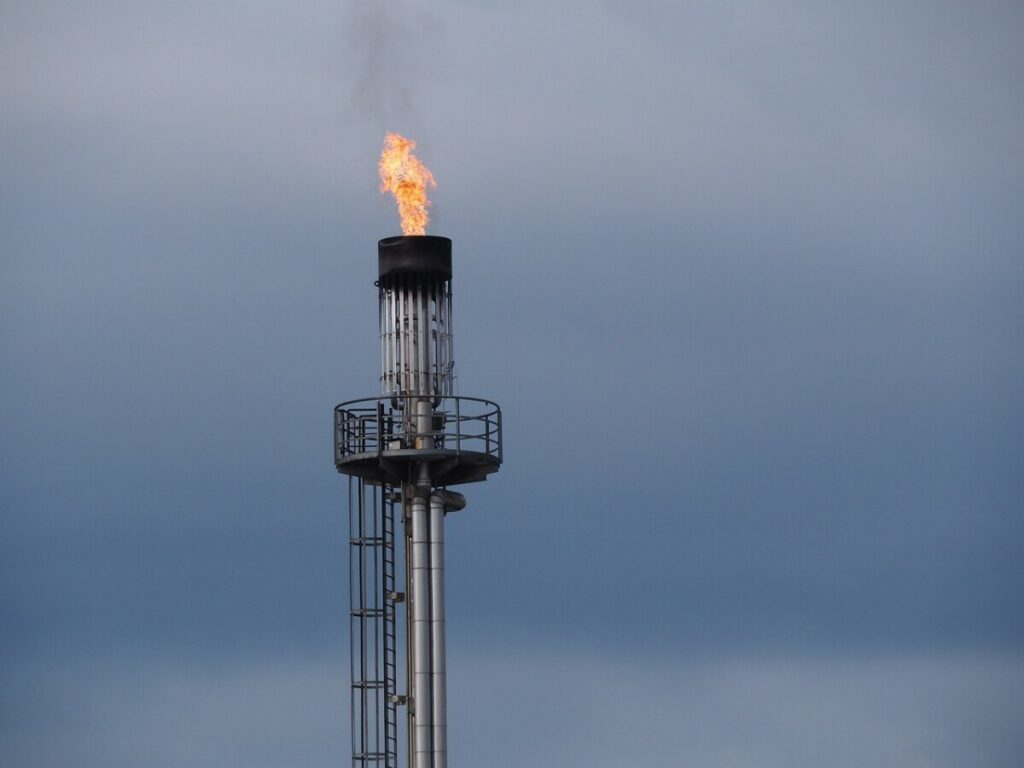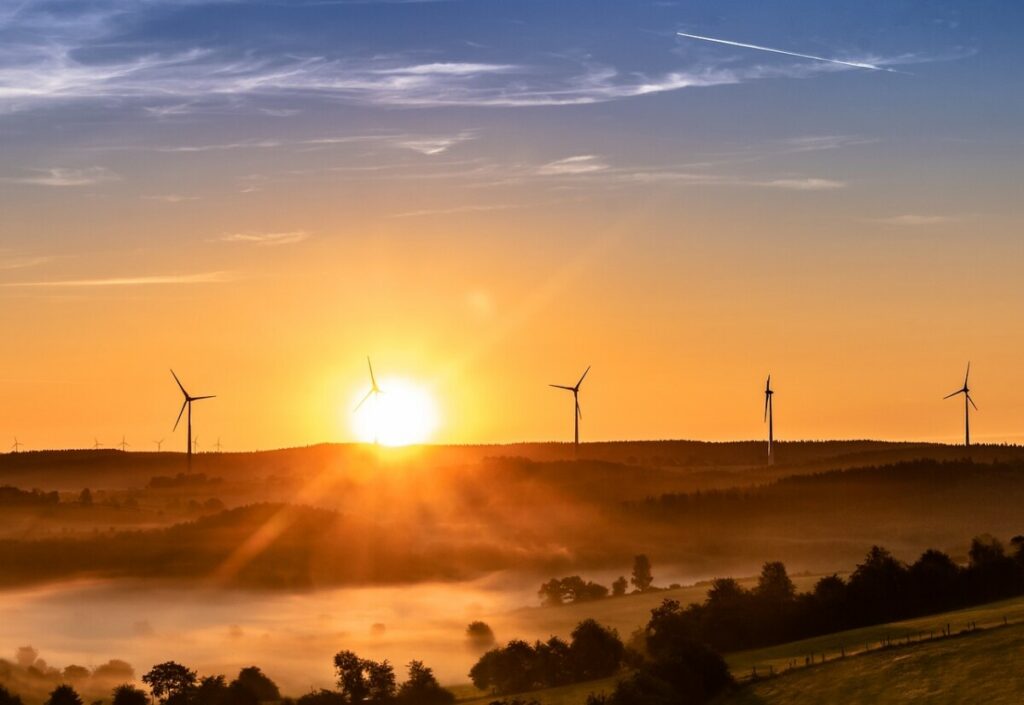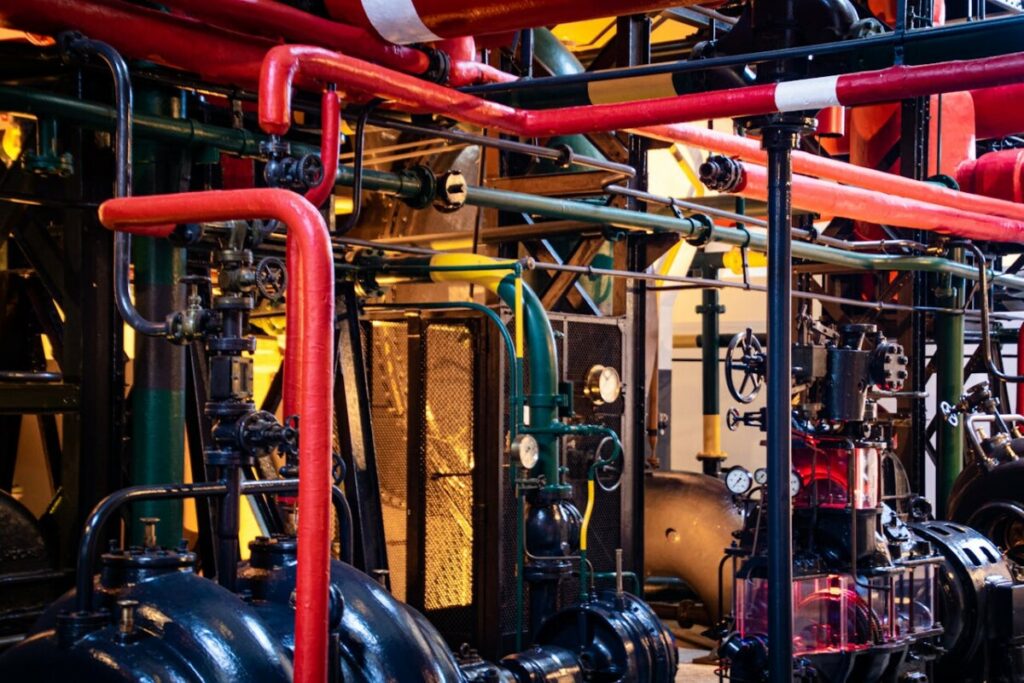Is Natural Gas a Renewable Energy?
When discussing energy sources, the question “Is natural gas a renewable energy?” often arises. This inquiry reflects growing concerns about environmental sustainability, climate change, and the future of energy supply.
Understanding the nature of natural gas and its role in the global energy mix is crucial for making informed decisions about energy policies and consumption.
Although natural gas is widely used for electricity generation and as a power source in various sectors, it is essential to explore whether it can truly be considered a renewable resource.
What is Natural Gas?
To address whether natural gas is a renewable energy, it is first necessary to understand what natural gas is. Natural gas is a fossil fuel primarily composed of methane.
A type of hydrocarbon that forms from the remains of plants and animals buried under the earth’s surface for millions of years.
High pressure and heat transform these organic materials into natural gas deposits, which are found deep within rock layers.
Where does natural gas come from? It is typically extracted from underground reservoirs or natural gas wells, often associated with oil fields.
The natural gas production process involves drilling into these reservoirs and bringing the gas to the surface. Where it is processed and transported through natural gas pipelines.
Conventional Natural Gas vs. Renewable Natural Gas
There are two primary types of natural gas: conventional natural gas and renewable natural gas (RNG).
Conventional natural gas, derived from fossil fuels, is a nonrenewable resource, meaning it cannot be replenished on a human timescale.
On the other hand, renewable natural gas, also known as biomethane, is produced from organic waste.
Such as food waste, animal manure, and wastewater treatment plants. RNG is considered renewable because it is derived from materials that are continuously produced and can be replenished.
Is Natural Gas a Renewable Energy?

The Environmental Impact of Natural Gas
One of the significant considerations in determining if natural gas is a renewable energy source is its environmental impact.
The use of natural gas has been promoted as a cleaner alternative to other fossil fuels. Such as coal and oil, primarily because it produces less carbon dioxide when burned.
However, natural gas is not without its environmental drawbacks. Methane emissions, a potent greenhouse gas, occur during natural gas production, processing, and transportation, contributing to climate change.
Additionally, the extraction process, particularly hydraulic fracturing (fracking), raises environmental concerns. Fracking involves injecting high-pressure fluid into rock layers to release natural gas.
Which can lead to water contamination, air pollution, and increased greenhouse gas emissions. The environmental impacts of natural gas must be carefully considered when evaluating its role in a cleaner energy future.
Is Natural Gas Nonrenewable or Renewable?
Given the definitions and distinctions between conventional natural gas and renewable natural gas, the answer to whether natural gas is a renewable energy source is complex.
Conventional natural gas is undoubtedly a nonrenewable resource, as it takes millions of years to form, and its supplies are finite.
However, renewable natural gas offers a potential pathway toward a more sustainable energy system. Though it is not yet widely available or used.
In summary, the answer to “Is natural gas a renewable energy?” is not straightforward. While conventional natural gas is nonrenewable, renewable natural gas provides an alternative that could contribute to a more sustainable energy future.
The Role of Natural Gas in the Energy Transition
As the world shifts towards a cleaner energy future, the role of natural gas in this transition becomes a critical topic of discussion.
Natural gas has been championed as a bridge fuel. One that can help reduce carbon emissions while renewable energy sources, like wind power and solar energy, continue to develop and become more widespread.
But can natural gas truly serve this role effectively, given its status as a nonrenewable resource?
Natural Gas as a Bridge Fuel
Natural gas is often touted as a bridge fuel because it burns more cleanly than other fossil fuels. Such as coal and oil.
When used in electricity production, natural gas produces fewer greenhouse gas emissions and less particulate matter. Such as sulfur dioxide and nitrogen oxides, compared to coal-fired power plants.
This reduction in emissions makes natural gas an attractive option for reducing the environmental impact of power generation in the short term.
However, it is essential to recognize that while natural gas produces less carbon dioxide than coal. It is still a significant source of greenhouse gases.
Methane, the primary component of natural gas, is a potent greenhouse gas. With a global warming potential much higher than carbon dioxide.
Methane emissions occur not only during the combustion of natural gas but also during its extraction, processing, and transportation.
These emissions raise concerns about whether natural gas can genuinely support a transition to a cleaner energy future.
Is Natural Gas a Renewable Energy?

Renewable Natural Gas: A Viable Alternative?
Renewable natural gas (RNG) has been proposed as a more sustainable alternative to conventional natural gas.
RNG is produced through the anaerobic digestion of organic waste, such as food scraps, livestock operations, and landfill gas.
This process captures methane that would otherwise be released into the atmosphere, thereby reducing overall greenhouse gas emissions.
The production of renewable natural gas can be beneficial for both energy supply and waste management.
By converting organic waste into a usable fuel source, RNG provides a renewable energy source that can help reduce dependence on nonrenewable resources.
Additionally, RNG can be used in existing natural gas infrastructure. Such as natural gas pipelines and power plants, making it a potentially seamless transition from conventional natural gas.
Despite these advantages, the use of renewable natural gas is not yet widespread. Challenges such as high production costs, limited availability of organic waste, and the need for advanced technology to process the gas efficiently have slowed its adoption.
As a result, while RNG holds promise for the future, its current impact on the energy transition remains limited.
Environmental Concerns Surrounding Natural Gas
While natural gas is often promoted as a cleaner energy option, its environmental impacts cannot be ignored.
The process of extracting natural gas, particularly through hydraulic fracturing, has been associated with several environmental concerns.
Fracking can lead to the contamination of groundwater, increased seismic activity, and the release of methane and other non-methane elements into the atmosphere.
These issues contribute to air pollution, water quality degradation, and the exacerbation of climate change.
Moreover, the continued reliance on natural gas, even as a bridge fuel, may delay the necessary investment and development of truly renewable energy sources.
Such as solar power, wind energy, and geothermal energy. The energy transition requires a comprehensive approach that prioritizes the reduction of greenhouse gas emissions and the promotion of sustainable energy practices.
Is Natural Gas a Renewable Energy?

The Future of Natural Gas in a Low-Carbon World
As global energy demand continues to rise, the role of natural gas in meeting this demand must be carefully evaluated.
While natural gas may have a place in the short-term energy mix, its long-term sustainability is questionable.
The use of natural gas must be balanced with efforts to develop and implement renewable energy sources. Such as solar power and wind energy, to ensure a cleaner, more sustainable energy future.
Renewable Energy Sources vs. Natural Gas: A Comparative Analysis
When evaluating the energy landscape, it’s important to compare natural gas with other renewable energy sources. Such as solar power, wind energy, and geothermal energy.
Understanding these comparisons can help determine whether natural gas should continue to play a significant role in energy production or if a shift towards more sustainable options is necessary.
Solar and Wind Power: The Rising Stars of Renewable Energy
Solar and wind power are often highlighted as the most promising renewable energy sources. Indeed solar energy harnesses power from the sun through photovoltaic cells.
While wind energy is generated by wind turbines that convert kinetic energy into electricity.
Both of these energy sources are considered truly renewable because they rely on natural processes that are continuously replenished and do not deplete over time.
In contrast, natural gas, even when considering renewable natural gas, is tied to finite resources or the availability of organic waste.
Furthermore, the production and use of natural gas result in greenhouse gas emissions, which contribute to climate change.
Solar and wind power, on the other hand, produce electricity with no direct emissions. Making them far more sustainable in the long term.
The Role of Natural Gas in Electricity Generation
Natural gas currently plays a significant role in electricity generation. Particularly in the United States, where it has surpassed coal as the leading source of electricity.
The reliability of natural gas as a power source, its ability to provide energy on demand, and its lower emissions compared to coal have all contributed to its widespread use.
Natural gas power plants are often used to provide baseload and peak-load electricity. Ensuring a stable and continuous supply of power.
However, this reliance on natural gas raises concerns about its environmental impact and sustainability. While natural gas produces fewer emissions than coal, it is not without its downsides.
The extraction, processing, and transportation of natural gas contribute to methane emissions. And the combustion of natural gas still results in carbon dioxide emissions, albeit at lower levels than other fossil fuels.
Is Natural Gas a Renewable Energy?

Addressing Methane Emissions and Environmental Impacts
Methane emissions are one of the most significant environmental concerns associated with natural gas.
Methane is a potent greenhouse gas, with a global warming potential many times greater than carbon dioxide.
Even small leaks in natural gas infrastructure, such as pipelines and well sites, can result in substantial methane emissions. Undermining the environmental benefits of switching from coal to natural gas.
To mitigate these emissions, technologies such as carbon capture and storage (CCS) and improved monitoring of methane leaks are being developed and implemented.
However, these solutions are not without challenges. Carbon capture, for example, is expensive and energy-intensive, and its widespread adoption has been slow.
Additionally, addressing methane leaks requires significant investment in infrastructure and technology, which can be costly and time-consuming.
The Future of Energy: Moving Towards Renewable Sources
Given the environmental concerns surrounding natural gas, many experts argue that the future of energy lies in the increased use of renewable energy sources.
Solar power, wind energy, and other renewable options offer the promise of a cleaner, more sustainable energy future. With the potential to significantly reduce greenhouse gas emissions and mitigate the impacts of climate change.
However, the transition to renewable energy is not without its challenges. The intermittent nature of solar and wind power requires the development of advanced energy storage solutions. Such as batteries, to ensure a reliable supply of electricity.
Additionally, significant investments in infrastructure, such as the construction of new transmission lines and the modernization of the electricity grid, are necessary to accommodate the growing share of renewable energy in the energy mix.
The Importance of a Balanced Energy Strategy
While the ultimate goal may be to transition to a fully renewable energy system, natural gas may still have a role to play in the short to medium term.
A balanced energy strategy that includes natural gas as a bridge fuel. Alongside aggressive investments in renewable energy sources, may offer the most pragmatic path forward.
This approach could help to reduce emissions while ensuring that energy demand is met reliably and affordably.
The Role of Policy and Innovation in Shaping the Future of Natural Gas

As we consider the question, “Is natural gas a renewable energy?” it’s crucial to recognize the role that policy and innovation will play in determining the future of natural gas within the global energy landscape.
Therefore government policies, technological advancements, and shifts in public perception will all influence whether natural gas continues to be a significant energy source or if it will gradually be phased out in favor of more sustainable alternatives.
Government Policies and Regulatory Measures
Government policies are instrumental in shaping the energy sector’s future, particularly in addressing the environmental impacts of natural gas.
Regulations aimed at reducing methane emissions, such as the U.S. Environmental Protection Agency’s (EPA) methane rule, are essential in minimizing the greenhouse gas emissions associated with natural gas production and transportation.
Additionally, policies that promote the development and use of renewable natural gas (RNG) can encourage a shift away from conventional natural gas towards more sustainable energy practices.
Furthermore, international agreements like the Paris Agreement have set ambitious targets for reducing carbon emissions and limiting global warming.
To meet these goals, countries may need to reevaluate their reliance on natural gas and accelerate the transition to renewable energy sources.
Incentives for renewable energy development, carbon pricing, and stricter emissions standards are all potential policy tools that could drive this transition.
Is Natural Gas a Renewable Energy?
Technological Innovations and the Future of Energy
Innovation will play a critical role in determining whether natural gas can maintain its place in the energy mix or if it will be supplanted by cleaner alternatives.
Advances in carbon capture and storage (CCS) technology could potentially reduce the carbon footprint of natural gas power plants, making them more compatible with climate goals.
However, as previously mentioned, the high costs and energy demands of CCS technology present significant challenges to its widespread adoption.
In addition to CCS, other technological developments, such as improvements in methane leak detection and reduction technologies, could help mitigate some of the environmental concerns associated with natural gas.
Moreover, innovations in renewable energy technologies, energy storage, and grid management will further support the integration of renewable energy sources, reducing the need for natural gas as a backup or bridge fuel.
Is Natural Gas a Renewable Energy?

Public Perception and the Shift Towards Renewable Energy
Public perception and societal values also play a crucial role in shaping energy policies and practices. As awareness of climate change and environmental issues grows, there is increasing pressure on governments and corporations to transition to cleaner, more sustainable energy sources.
Public demand for transparency and environmentally responsible practices is driving changes in the energy industry, with many companies investing in renewable energy projects and reducing their reliance on fossil fuels.
As renewable energy sources become more cost-competitive and widely available, public support for these technologies is likely to increase, further accelerating the energy transition.
This shift in perception may lead to a reduced role for natural gas in the future, particularly as consumers and businesses prioritize sustainability in their energy choices.
Conclusion: Is Natural Gas a Renewable Energy?
In conclusion, the question “Is natural gas a renewable energy?” is complex and multifaceted.
Conventional natural gas, derived from fossil fuels, is clearly a nonrenewable resource, with significant environmental impacts that cannot be overlooked.
Renewable natural gas offers a more sustainable alternative, but its current limitations and challenges prevent it from being a comprehensive solution.
As the world continues to grapple with the challenges of climate change and the need for a cleaner energy future, the role of natural gas must be carefully reconsidered.
While it may serve as a bridge fuel in the short term, the ultimate goal should be to transition towards truly renewable energy sources, such as solar power, wind energy, and geothermal energy, that can provide sustainable and environmentally responsible energy for generations to come.
Is Natural Gas a Renewable Energy? Frequently Asked Questions

What are the environmental impacts of using natural gas?
Natural gas produces fewer carbon emissions than coal and oil, but it still contributes to greenhouse gas emissions, particularly methane, which is a potent greenhouse gas.
Can natural gas be part of a sustainable energy future?
Natural gas may play a role as a bridge fuel in the short term, but the long-term goal should be to transition to renewable energy sources that have a lower environmental impact.
What is the difference between conventional natural gas and renewable natural gas?
Conventional natural gas is a fossil fuel, while renewable natural gas is produced from organic waste through processes like anaerobic digestion.
How does natural gas compare to other renewable energy sources like wind and solar?
While natural gas is cleaner than other fossil fuels, it is still nonrenewable and produces greenhouse gas emissions. Wind and solar power are fully renewable and produce no direct emissions, making them more sustainable in the long term.
Is natural gas considered a renewable energy source?
No, conventional natural gas is a nonrenewable resource. However, renewable natural gas (RNG) is produced from organic waste and is considered a renewable energy source.
Please take a couple more seconds of your time to share “Is Natural Gas a Renewable Energy?” You will be helping other to enhance their knowledge. Thank you!
Recent Posts
Understanding Energy and Electricity: The Power For Progress
Energy and Electricity Energy and electricity are integral components of modern life, powering everything from homes and businesses to transportation and communication. Without them, the...
The Future of Wind Energy The future of wind energy is set to play a critical role in addressing global energy needs while combating climate change. As renewable energy sources like wind and...


